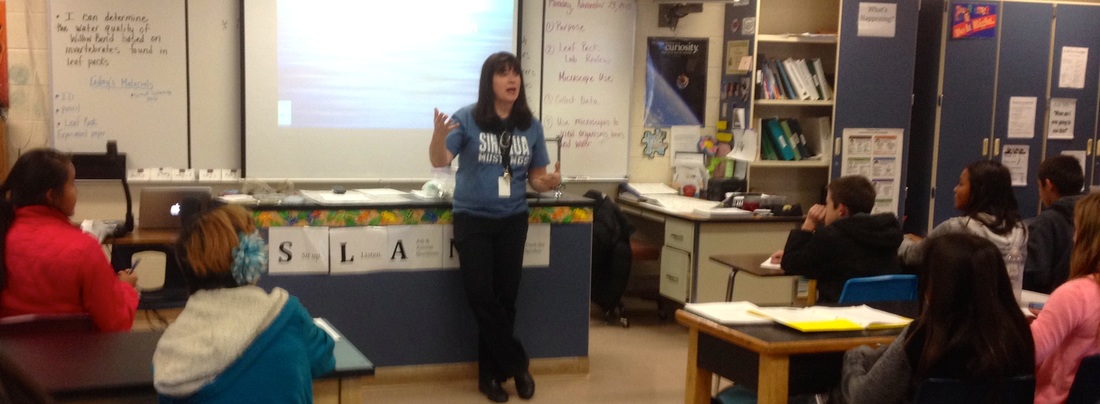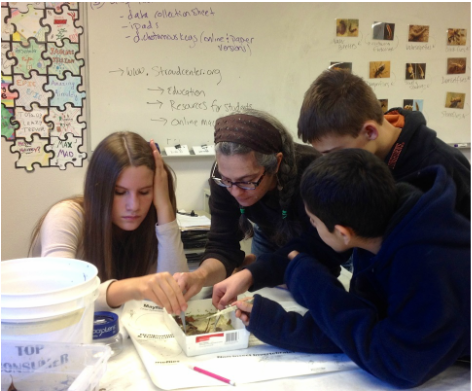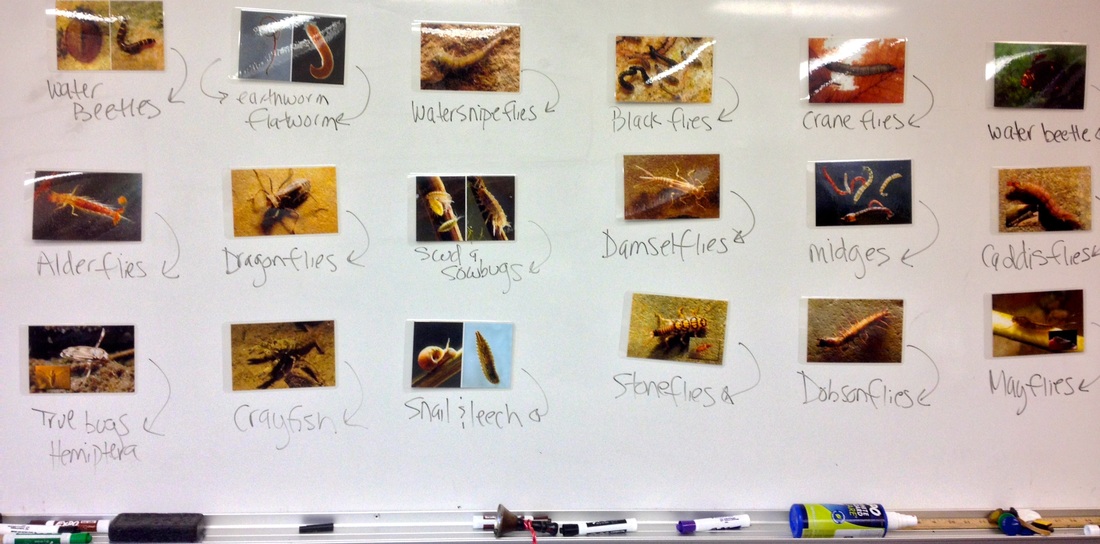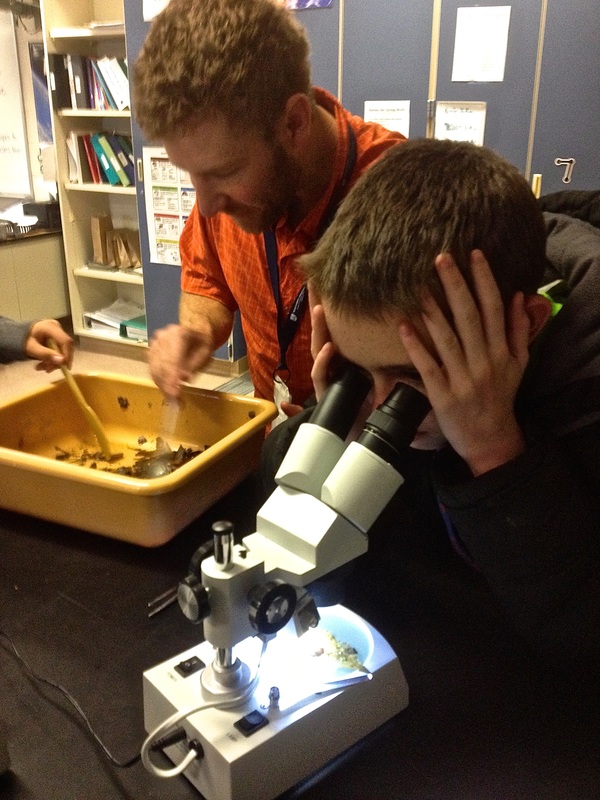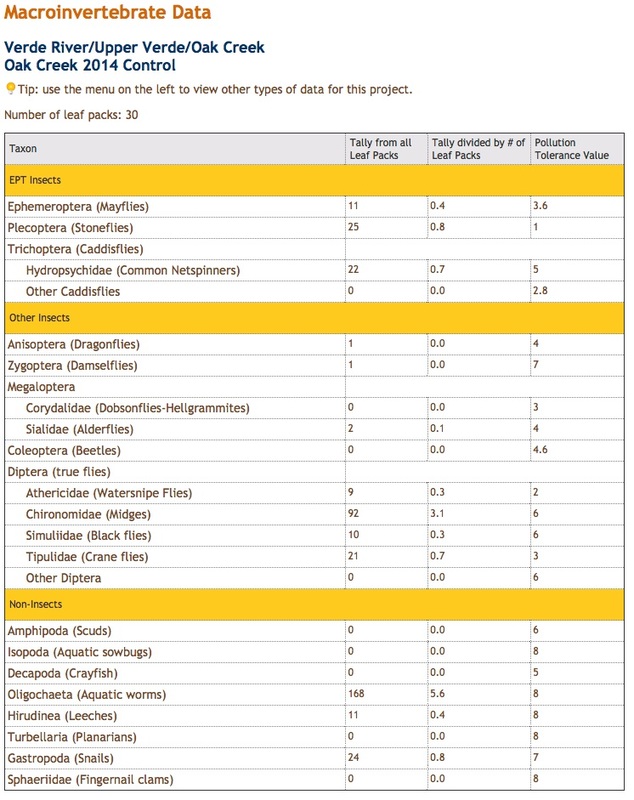|
7th grade science teachers Carrie Jenkins and Susan Brown, from Sinagua Middle School and Northland Preparatory Academy respectively, have been collaborating for four years on an investigation of macroinvertebrates in Oak Creek and the Rio de Flag near Willow Bend Environmental Education Center. Carrie and Susan spend hours each fall preparing thirty leaf packs for each site and depositing them in the two environments. They retrieve the packs approximately one month later. Their students then compare the macroinvertebrates they find in the leaf packs from Oak Creek with those from the Willow Bend "pond". The teachers use online resources from the Leaf Pack Network, a network of citizens, teachers and students investigating their local stream ecosystems. The site has protocols for collecting the samples, resources for macroinvertebrate identification, and a data portal for them to upload their results. Macroinvertebrates are organisms that are large (macro) enough to be seen with the naked eye and lack a backbone (invertebrate). They inhabit all types of running waters, from fast flowing mountain streams to slow moving muddy rivers. Examples of aquatic macroinvertebrates include insects in their larval or nymph form, crayfish, clams, snails, and worms (see photos below). Most live part or most of their life cycle attached to submerged rocks, logs, and vegetation.
After completing their data sheet, students compile their data and upload it to the Leaf Pack Network site. The site has tools for students to compare the data from their two schools, as well as other schools and sites. The students can use the data to determine general stream health. If the overall pollution tolerance value of the organisms is low, the stream is most likely less burdened by contaminants than if the overall pollution tolerance level is high. This year had some disappointments for the two educators, as the leaf packs in Oak Creek had been purposefully cut away from their anchor so only one pack remained, and the leaf packs in the Willow Bend pond area were imbedded in four inches of ice - making removal difficult. Undaunted, the teachers collected leaf litter along Oak Creek so their students could still look for organisms, and thawed the iced bags in time for class. The Flagstaff STEM community is thrilled to have these dedicated educators!
0 Comments
Leave a Reply. |

